Viewing: Blog Posts Tagged with: sleep, Most Recent at Top [Help]
Results 1 - 25 of 61
Blog: the dust of everyday life (Login to Add to MyJacketFlap)
JacketFlap tags: Sally Springer, Watercolor, SLEEP, Add a tag
Blog: the dust of everyday life (Login to Add to MyJacketFlap)
JacketFlap tags: kids sleeping, SLEEP, sheep, highlights, FLYING, Add a tag
This is my post for the theme of sleep, this postcard got me a job from highlights, a hidden picture where the sheep are dreaming of kids flying. It was fun.
Blog: the dust of everyday life (Login to Add to MyJacketFlap)
JacketFlap tags: Watercolor, SLEEP, DREAM, Wendy Edelson, THEMED ART, Add a tag
Blog: the dust of everyday life (Login to Add to MyJacketFlap)
JacketFlap tags: bed, Digital artwork, THEMED ART, Patrick Girouard, baseball bat, Monster, sleep, Add a tag
Blog: the dust of everyday life (Login to Add to MyJacketFlap)
JacketFlap tags: sleep, Digital artwork, Cathy Morrison, Add a tag
 |
| Baby on Board |
There's more images from this book, including free downloadable activity sheets at my Studio With A View Blog.
Happy November!
Blog: drawboy's cigar box (Login to Add to MyJacketFlap)
JacketFlap tags: bed, Patrick Girouard, weapon, baseball bat, Drawboy, monster, illustration friday, sleep, Add a tag
Blog: Blogcha! (Login to Add to MyJacketFlap)
JacketFlap tags: picture book, publishing, animals, cartoon, sleep, bear, childrens, grizzle grump, Add a tag
GOODNIGHT GRIZZLE GRUMP!
Published by HarperCollins (October 2015)
My first picture book as author and illustrator!
- Grizzle Grump's page on the HarperCollins site
FIVE STARS- San Francisco Book Review
"This is a good choice for read-alouds and great fun, especially for those readers who can appreciate a good nap." - Kirkus Book Review
"Goodnight, Grizzle Grump! is a great bedtime read. Warm and funny illustrations and the use of repetition are sure to connect with readers." - YA Books Central




Blog: The Children's Book Review (Login to Add to MyJacketFlap)
JacketFlap tags: Bedtime, Sleep, Bedtime Stories, Author Showcase, Elizabeth Alger, Sleeping Books, Add a tag
This charming fairytale, The Kitten Who Wants to Fall Asleep, is interwoven with psychological sleep-inducing techniques which are astonishingly effective.
Add a CommentBlog: drawboy's cigar box (Login to Add to MyJacketFlap)
JacketFlap tags: bedtime, sleep, mother, childhood, hug, bones, friend, fireflies, gargoyle, Patrick Girouard, dig, Drawboy, girl, boy, monster, illustration friday, Add a tag
Blog: E is for Erik (Login to Add to MyJacketFlap)
JacketFlap tags: polar bear, kaktovik alaska, presidential polar bear post card project, happy new year, polar bears, sleep, activism, Add a tag
I decided to start the New Year with a few illustrated resolutions - in polar bear form, of course! This one will be really hard to keep... but perhaps by sharing with the President I'll hold myself a little more to task :)
Blog: OUPblog (Login to Add to MyJacketFlap)
JacketFlap tags: History, Literature, Religion, algebra, william shakespeare, sleep, new year's resolutions, Mathematics, Buddhism, VSI, Very Short Introductions, exploration, new year's day, stanley wells, *Featured, Classics & Archaeology, Health & Medicine, VSI online, Shakespeare’s Comedies, Classical Mythology, Circadian Rhythms, Add a tag
Why make New Year's Resolutions you don't want to keep? This year the Very Short Introductions team have decided to fill the gaps in their knowledge by picking a VSI to read in 2016. Which VSIs will you be reading in 2016? Let us know in the comment section below or via the Very Short Introductions Facebook page.
The post Very Short Resolutions: filling the gaps in our knowledge in 2016 appeared first on OUPblog.
Blog: OUPblog (Login to Add to MyJacketFlap)
JacketFlap tags: holidays, Christmas, sleep, stress, health issues, *Featured, Science & Medicine, Health & Medicine, Online products, Oxford Medicine Online, alcohol consumption, Christmas accidents, Add a tag
It’s that time of year again: chestnuts are roasting on an open fire, halls are decked with boughs of holly, and everyone’s rockin’ around the Christmas tree…. As idyllic as this sounds, sometimes the holiday season just doesn’t live up to its expectations of joy, peace, and goodwill.
The post Christmas calamities appeared first on OUPblog.
Blog: Darcy Pattison's Revision Notes (Login to Add to MyJacketFlap)
JacketFlap tags: bedtime, sleep, bedtime story, rabbit who could not sleep, Picture Books, Add a tag
Swedish psychologist Carl-Johan Forssén Ehrlin surprised the book publishing world this summer as his book for children and their parents shot to number one on Amazon. The Rabbit Who Wants to Fall Asleep is a self-help book that gives parents a script to follow as they try to get a child to go to sleep. Because of its performance on Amazon, Penguin has picked up the book for a reported seven-figure deal.
Of course, I had to read it. Buzz does sell books.

Rabbit (if I can casually call it by the name of the insomniac main character) reminds me of the Academy Awards ceremony. Screenwriters, directors, actors and actresses, cinematographers and the full complement of support staff for a major move were awarded the highest honor that filmmaking can bestow, Academy Awards. And for every movie about a cause—from elderly rights to gay rights and beyond—the person being honored felt compelled to stand up and explain why their cause was so important and timely. . . thereby negating the art for which they’d just been honored.
Why did they not trust their art to plead their cause in deeper and stronger ways than a week diatribe made during a gala ceremony? It baffles me.
In the same way Ehrlin explains why a good bedtime story works. He has built into the script certain keywords – sleep now, yawn, now—which should help put the child in the right frame of mind. Further, he uses some words because they sound calm and slow, thus reinforcing the desired frame of mind. Repetition finds its place as a tool to calm and convince a child to fall asleep.
But why does Ehrlin feel the need to explain it all so blatantly? Perhaps, it’s because parents don’t go behind the scenes for a children’s bedtime story; they don’t understand, and therefore don’t trust, that the writer really knows what s/he is doing when writing this kind of story.
In fall 2016, I’ll join the ranks of authors with a bedtime story, ROWDY: The Pirate Who Could Not Sleep. Let me show you what’s behind the curtain of my writing process.

The Sounds of Words
As a young writer, I once heard Newbery medalist Lois Lowry speak about a story that ended in a quiet moment that she hoped would calm a child and help them sleep. She avoided harsh-sounding words and used soft words. That’s right. The way the words sounded was just as important, if not more so, than the meaning of the words.
Poets John Ciardi and Miller Williams said a similar thing in their classic book, How Does a Poem Mean. They emphasize the “connotations speaking to connotations,” an effect they say will create imagery and symbolism. In other words, it matters whether you use the word “fire” or “inferno” because of how it sounds, its connotations and its definitions. Just as important, though, is how it affects the rhythm pattern of your piece of writing. Fire has only one syllable, while Inferno has three syllables; using one over the other affects the rhythm patterns of the writing.
I have a B.A. in Speech Pathology and an M.A. in Audiology; one of the most useful classes from my college years was phonics, or the study of how sounds are made in the human mouth and how to record those sounds with the International Phonetic Alphabet.
For a bedtime story, you want to avoid harsh sounding consonants, what phonetics calls fricatives or affricatives: f, v, th, t, d, sh, zh, ch, j, s and z. Other sounds to avoid are the plosives: b, p, t, d, k, g. You can’t avoid these two major groups of consonants entirely! But you can minimize them, especially when you want the words to be the softest.
Another distinction phonetics makes is among voiced or unvoiced consonants. Put your hand on your throat and say T –T –T ; repeat with D – D – D. Do you feel that your vocal cords vibrate for the D, but not for the T? T is unvoiced; D is voiced. Unvoiced consonants are softer, and more suited to bedtime stories.
The softest sounds are the glides: w, l, r and y. These are the real winners for a calming bedtime story.
For vowels, you should understand that some vowels involve lots of tension in the mouth, while some are created with a relaxed mouth. Say a long A; now say AW. Do you feel the difference in the mouth’s tension?
Ehrlin merely takes a clue from phonetics/linguistics and uses relaxed vowels, along with soft consonants.
Why is a rabbit the right animal for Ehrlin to choose for a bedtime story? Rabbit is a relatively calm word: Glide R; short A is relatively relaxed; B is a plosive, but it’s buried in the word’s middle; UH is a relaxed vowel; T is a plosive but because it’s unvoiced, or your vocal cord doesn’t vibrate for it, it’s relatively calm.
My Fall 2016 bedtime story, ROWDY: THE PIRATE WHO COULD NOT SLEEP, is about Captain Whitney Black McKee. She’s a rowdy pirate captain who fights sea monsters and returns to home port, but finds that she can’t sleep. Her crew goes a’thievin’, in search of a lullaby to help her sleep. In the end, the cabin boy brings back her Pappy who sings her a lullaby.
Here’s that last stanza, which you cannot read it harshly because the words, the phrasing and the story that I wrote demand that you say it softly.
Then Pappy sang of slumber sweet,
while stars leaned low and listened.
And as the soft night gathered round.
The pirates’ eyes all glistened.
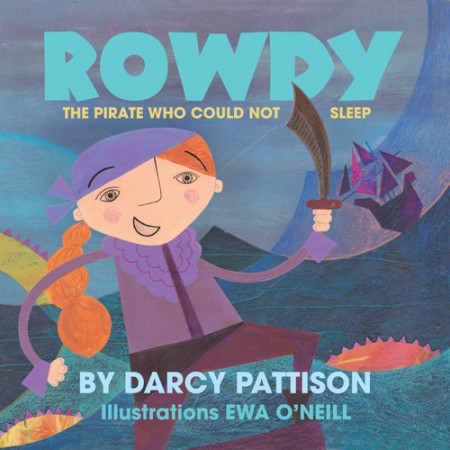
GREAT bedtime stories include. . .
- Child-in-lap relationship. Mem Fox, the beloved Australian writer, talks about the importance of keeping in mind the child-in-the-lap relationship. She means that when you read a story to a child, you are also developing a relationship with that child. She likes to end stories with something that will make the child turn to the adult and give them a hug or say, “I love you.”
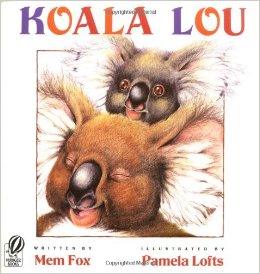 Her beloved book, Kaola Lou, has the refrain, “Kaola Lou, I do love you.” And of course, it’s hard to read without also saying to the child in your lap, “I love you.”
Her beloved book, Kaola Lou, has the refrain, “Kaola Lou, I do love you.” And of course, it’s hard to read without also saying to the child in your lap, “I love you.” - Language development. The great bedtime stories take into account the whole child, not just his or her ability to go to sleep quickly. Instead, they develop a child’s language. Because these are books provided at developmentally appropriate times in a child’s life, it’s an opportunity to entice them with language: the sounds of their native language, the vocabulary, the rhythm patterns and so on. Kindergarten teachers spend time teaching nursery rhymes (Jack be nimble; Jack be quick; Jack jump over the candlestick.) because it develops skills in language.
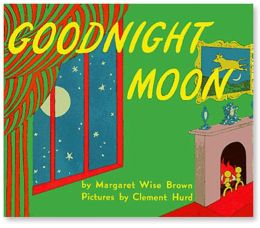
In a like manner, the classic Goodnight Moon! by Margaret Wise Brown uses rhythm, refrains and much more. Consider the humor of this line: “Goodnight, nobody.” It makes for a story that you don’t mind reading for the 1000th time. - Story. As children develop language, an important skill is the ability to understand stories. This involves sequencing of events (beginning, middle, end), understanding cause-effect relationships, character motivations and much more.
 Llama, Llama Red Pajama by Anna Dewdney has an appropriately simple story. Baby Llama is tucked into bed, but when Mama leaves the room, he calls that he needs a drink of water. The plot complication is just that Mama is delayed in bringing up the water, so Baby Llama panics. When Mama shows up, she reassures him that she is “always near, / even if she’s / not right here.” It’s a gentle, reassuring story. And while it tells the story, it also gives kids experience in understanding Story.
Llama, Llama Red Pajama by Anna Dewdney has an appropriately simple story. Baby Llama is tucked into bed, but when Mama leaves the room, he calls that he needs a drink of water. The plot complication is just that Mama is delayed in bringing up the water, so Baby Llama panics. When Mama shows up, she reassures him that she is “always near, / even if she’s / not right here.” It’s a gentle, reassuring story. And while it tells the story, it also gives kids experience in understanding Story. - Vocabulary building. Kids love big words—in the right context.
Jane Yolen’s story, How Do Dinosaurs Say Good Night? provides great fun with the names of various dinosaur species. What kid can resist words such as Allosaurus, Pteradon, Apatosaurus, and Tyrannosaurus Rex? But Yolen also includes words appropriate for the bedtime hour. “Does a dinosaur slam his tail and pout?”
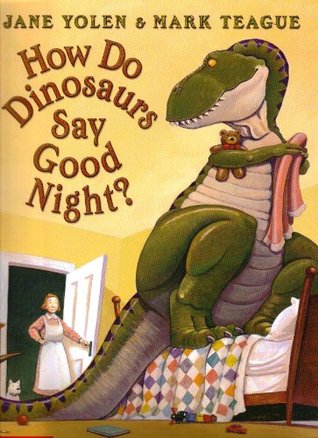
You can’t read this without screwing up your face in a pout, thus teaching the meaning of a vocabulary word in a natural context.
My own bedtime story is titled ROWDY: The Pirate Who Could Not Sleep (to be released Fall, 2016). Will kids know the meaning of “rowdy”? Doubtful. But within the story’s context, they’ll learn it. Bedtime stories, then, are a comfortable and natural context for teaching new words.
Great children’s book authors create works that don’t need the artificial crutches of bold and italic fonts to tell the adult reader how to present the story. Instead, it’s right there in black and white on the page. It tells a great story that reinforces language and vocabulary development. And when it’s done right, a great bedtime story gives an adult an opportunity to give the kid a hug and a kiss and say, “I love you.”
Take the Quiz: ARE YOU READY TO WRITE and SELL A CHILDREN’S PICTURE BOOK?
Blog: Miss Marple's Musings (Login to Add to MyJacketFlap)
JacketFlap tags: sloths, Samantha Berger, Perfect Picture Book Friday, activities for teachers, Kristyna Litten, Snoozefest, sleep, festivals, Add a tag
Title: Snoozefest Written by: Samantha Berger Illustrated by: Kristinya Litten Published by: Dial Books for Young Readers, 2015 Themes/Topics: Sloths, sleep, festivals Suitable for ages: 3-7 Opening: In the center of Snoozeville, dwells the wee one, … Continue reading
Add a CommentBlog: Playing by the book (Login to Add to MyJacketFlap)
JacketFlap tags: Courtney Dicmas, Friendship, Humour, Animals, Sleep, Lemurs, Add a tag
Last year was (unofficially) the Year of the Sloth.
There was Sloth Slept on by Frann Preston-Gannon, Sparky! by Jenny Offill and Chris Appelhans, The Power of Sloth by Lucy Cooke and The Lazy Friend by Ronan Badel to name but a few.
I wonder, however, if perhaps 2015 will be the Year of the Lemur…
 Lemur Dreamer by Courtney Dicmas (@CourtneyDicmas) stopped me in my tracks when I first saw it; the bold beauty and energy of its cover, with a silver foil moon is genius. I immediately wanted to know where the lemur is off to, and then I noticed that actually he was in a rather perilous situation (can you see the board he’s stepping off?)…
Lemur Dreamer by Courtney Dicmas (@CourtneyDicmas) stopped me in my tracks when I first saw it; the bold beauty and energy of its cover, with a silver foil moon is genius. I immediately wanted to know where the lemur is off to, and then I noticed that actually he was in a rather perilous situation (can you see the board he’s stepping off?)…
We all know the power a good opening line to reel us into a story, but with picture books, front covers can have the same task; a single snapshot to seduce us, to pique our curiosity and get us to turn inside. And Lemur Dreamer manages to do that perfectly, drawing us into a tale of an innocent lemur whose habit of sleepwalking takes him on all sorts of adventures but also puts him in danger. He’s got some great friends, however, who keep an eye out for him and come up with an ingenious solution to the trouble he finds himself in.
Dicmas believes her superpower is “drawing crocodile eyebrows“. She certainly has a real knack for fluid, expressive and joyous animal illustrations, drawn with simple outlines and filled with washes of colour, reminding me at times of the brilliant Polly Dunbar. Dicmas also has a self-confessed addiction to the the colour blue, and this gives the book a perfect soothing tone, ideal for a giggly yet calming and reassuring bedtime read.
Harold Finds A Voice, Dicmas’ début picture book, was shortlisted in the UK for the 2014 Waterstones Book Prize and I suspect more official recognition of her work will follow swiftly. I certainly will be on the look out for future books by this talented artist.
Inspired in particular by the shiny cover and one of the interior spreads we turned our hands to creating a Dicmas inspired picture.

First the girls gave their paper a watercolour wash and once dry, they stuck tissue paper on in the shape of simple buildings. On a separate piece of baking paper (tracing paper would have worked too), they drew another row of buildings, in outline with a few windows and other details.

M and J stuck the baking paper over the watercolour-washed paper, and then cut out a moon from silver foil, a length of string for a washing line, and copied the lemur’s legs and a pigeon to stick onto the top layer of their image.

These are the latest additions to our home gallery, alongside last week’s printing and fishing nets:


Whilst painting, drawing and sticking we listened to:
Other activities which could work well alongside reading Lemur Dreamer include:
What book cover has recently made you stop in your tracks?
Disclosure: I was sent a free review copy of Lemur Dreamer by its publisher.
Blog: Inkygirl: Daily Diversions For Writers (Login to Add to MyJacketFlap)
JacketFlap tags: santa, sleep, dream, Comics for writers, advance, Add a tag

Another comic from the archives. 'Tis the season, after all...
Blog: OUPblog (Login to Add to MyJacketFlap)
JacketFlap tags: space, sleep, stress, team work, Extreme, astronaut, how to, mountain climbing, personality, Paul Martin, *Featured, Science & Medicine, Psychology & Neuroscience, Sports & Games, Arts & Humanities, Emma Barrett, How some people thrive at the limits, resolve conflict, thrill seekers, Books, advice, Add a tag
Throughout history, some people have chosen to take huge risks. What can we learn from their experiences?
Extreme activities, such as polar exploration, deep-sea diving, mountaineering, space faring, and long-distance sailing, create extraordinary physical and psychological demands. The physical risks, such as freezing, drowning, suffocating or starving, are usually obvious. But the psychological pressures are what make extreme environments truly daunting.
The ability to deal with fear and anxiety is, of course, essential. But people in extremes may endure days or weeks of monotony between the moments of terror. Solo adventurers face loneliness and the risk of psychological breakdown, while those whose mission involves long-term confinement with a small group may experience stressful interpersonal conflict. All of that is on top of the physical hardships like sleep deprivation, pain, hunger, and squalor.
What can the rest of us learn from those hardy individuals who survive and thrive in extreme places? We believe there are many psychological lessons from hard places that can help us all in everyday life. They include the following.
- Cultivate focus.
Focus – the ability to pay attention to the right things and ignore all distractions, for as long as it takes – is a fundamental skill. Laser-like concentration is obviously essential during hazardous moves on a rock face or a spacewalk. Focus also helps when enduring prolonged hardship, such as on punishing polar treks. A good strategy for dealing with hardship is to focus tightly on the next bite-sized action rather than dwelling on the entire daunting mission.
The ability to focus attention is a much-underestimated skill in everyday life. It helps you get things done and tolerate discomfort. And it is rewarding: when someone is utterly absorbed in a demanding and stretching activity, they experience a satisfying psychological state called ‘flow’ (or being ‘in the zone’). A person in flow feels in control, forgets everyday anxieties, and tends to perform well at the task in hand. The good news is that we can all become better at focusing our attention. One scientifically-proven method is through the regular practice of meditation.
- Value ‘knowhow’
Focus helps when tackling difficult tasks, but you also need expertise – high levels of skills and knowledge – to perform those tasks well. Expertise underpins effective planning and preparation and enables informed and measured judgements about risks. In high-risk situations experts make more accurate decisions than novices, who may become paralysed with indecision or take rapid, panicky actions that make things worse.
Expertise also helps people in extreme environments to manage stress. Stress occurs when the demands on you exceed your actual or perceived capacity to cope. An effective way of reducing stress, in everyday life as well as extremes, is by increasing your ability to cope by developing high levels of skills and experience.
Developing expertise requires hard work and persistence. But it’s worth the investment – the dividends include better assessment of risk, better decision-making, and less vulnerability to stress.

- Value sleep.
Getting enough sleep is often difficult in extreme environments, where the physical demands can deprive people of sleep, disrupt their circadian rhythms, or both.
Bad sleep has a range of adverse effects on mental and physical wellbeing, including impairing alertness, judgment, memory, decision-making, and mood. Unsurprisingly, it makes people much more likely to have accidents.
Many of us are chronically sleep deprived in everyday life: we go to bed late, get up early, and experience low-quality sleep in between. Most of us would feel better if we slept more and slept better. So don’t feel guilty about spending more time in bed.
Experts in extreme environments often make use of tactical napping. Research has shown that napping is an effective way of alleviating the adverse consequences of bad sleep. It’s also enjoyable.
- Be tolerant and tolerable.
Adventures in extreme environments often require small groups of people to be trapped together for months at a time. Even the best of friends can get on each other’s nerves under such circumstances. Social conflict can build rapidly over petty issues. Groups split apart, individuals are ostracised, and simmering tensions may even explode into violence.
When forming a team for an extreme mission, as much emphasis should be placed on team members’ interpersonal skills as on their specialist skills or physical capability. Research shows that team-building exercises – though often mocked – can be an effective way of enhancing teamwork.
Effective teams are alert to mounting tensions. Individuals keep the little annoyances in perspective and respect others’ need for privacy. To survive and thrive in demanding situations, people must learn to be tolerant and tolerable. The same is true in everyday life.
- Cultivate resilience
Extreme environments are dangerous places where people endure great hardship. They may suffer terrifying accidents or watch others die. Such experiences can be traumatic and, in some cases, cause long-term damage to mental health.
But this is by no means inevitable. Research has shown that many individuals emerge from extreme experiences with greater resilience and a better understanding of their own strengths. By coping with life-threatening situations, they become more self-confident and more appreciative of life.
Resilience is a common quality in everyday life. We tend to underestimate our own ability to cope with stress, and overestimate its adverse consequences. Some stress is good for us and we should not try to avoid it completely.
Featured image credit: Mount Everest, by tpsdave. Public Domain via Pixabay.
The post Five lessons from extreme places appeared first on OUPblog.
Blog: An Awfully Big Blog Adventure (Login to Add to MyJacketFlap)
JacketFlap tags: writing, sleep, modern design, bronte, 19th century, Joan Lennon, Add a tag
I've just finished reading a wonderful blog by Penny Dolan over on The History Girls, about a series of connections that lead her from a randomly-chosen book from her shelves, right through a whole string of 19th century names, fictional characters and relationships, all linked by a wooden-legged chap called W.E. Henley. Which made me think of Charlotte Bronte. Recently, she's been my W.E. Henley.
It started with a Facebook post - which sent me to the Harvard Library online site where they have been working on restoring the tiny books Charlotte and Branwell Bronte made when they were children - which led to my own History Girl post Tiny Bronte Books. (Please, if you go to have a look, scroll down to the bottom and watch the Brontesaurus video - you won't regret it.)
I'm in the midst of editing an anthology of East Perthshire writers called Place Settings and was delighted to read in one of the entries the author's interest in the Brontes, and how "... every night, the sisters paraded round the table reading aloud from their day's writings."
Then I got involved in a project run by 26, the writers' collective, in which writers were paired with design studios taking part in this year's London Design Show, and asked to write a response to one of their objects. I was given Dare Studio who were putting forward, among other lovely things, a new design - the Bronte Alcove.
The alcove is meant to be a private space within public places, blocking out the surrounding bustle and noise. Which made me think of bonnets. Which led me back to the internet, which led me, by way of images of hats, to the passage below, written by Elizabeth Gaskell on her visit to Charlotte at the parsonage:
I asked her whether she had ever taken opium, as the description given of its effects in Villette was so exactly like what I had experienced, - vivid and exaggerated presence of objects, of which the outlines were indistinct, or lost in golden mist, etc. She replied, that she had never, to her knowledge, taken a grain of it in any shape, but that she had followed the process she always adopted when she had to describe anything which had not fallen within her own experience; she had thought intently on it for many and many a night before falling to sleep, - wondering what it was like, or how it would be, - till at length, sometimes after the progress of her story had been arrested at this one point for weeks, she wakened up in the morning with all clear before her, as if she had in reality gone through the experience, and then could describe it, word for word, as it had happened. I cannot account for this psychologically; I only am sure that it was so, because she said it.
Which led me to wonder ... my own practice has always been to try not to think about work when I'm courting sleep. And I have rarely, if ever walked round my table of an evening, reading aloud from my day's work. But have I been losing out here? Do you do as Charlotte did? I would be most interested to know.
Meantime, I wait for the next popping up of my very own W.E. Henley.
Blog: (Login to Add to MyJacketFlap)
JacketFlap tags: humor, Men, Crime, sleep, Dad, Fatherhood, Sleepwalking, It Made Me Laugh, story, family, Add a tag
I had a dream!
Note my declaration is past tense meaning there is no similarity in weight or profundity to Dr. King’s Dream. No, I had a dream that scared me enough to rouse me from my deep slumber to ensure the security of my homestead. You know, that hazy stumble to check the locks on the doors, ignoring the fact that if someone wanted in badly enough, a locked door wouldn’t stop them.
Because I didn’t fully wake, I don’t recall the entire dream, mostly just the impact it had on me – then later, the impact it had on others. I am a very deep sleeper. For years I have said that comes from having a clean conscience. I’m not sure that is true, I just say it to make myself sound righteous.
 This dream involved a thief. But he wasn’t just any thief, he was after one thing: our light bulbs. I have heard of houses being stripped of all their copper tubing, never their bulbs. We switched to compact fluorescent long before the government told us we had to. I wonder if I harbor a subconscious grudge about paying more for light bulbs now and my dream was anti-government. Or maybe I’m against the technology that takes ten to fifteen seconds to brighten the room whenever I flip a switch. I’m like everyone else, when I want light, I want it immediately. Who knows, but this thief had the old time black mask. I somehow saw him in my mind before I got up, which should have been my first clue that he didn’t exist.
This dream involved a thief. But he wasn’t just any thief, he was after one thing: our light bulbs. I have heard of houses being stripped of all their copper tubing, never their bulbs. We switched to compact fluorescent long before the government told us we had to. I wonder if I harbor a subconscious grudge about paying more for light bulbs now and my dream was anti-government. Or maybe I’m against the technology that takes ten to fifteen seconds to brighten the room whenever I flip a switch. I’m like everyone else, when I want light, I want it immediately. Who knows, but this thief had the old time black mask. I somehow saw him in my mind before I got up, which should have been my first clue that he didn’t exist.
Retrieving my trusty Louisville Slugger from behind the bed, I slowly walked out to the den and checked one door, club at the ready. (Yes, I am an Army certified expert marksman who doesn’t keep a weapon in the house – unless you are a bad guy, and then I have an arsenal.) Door one, secure. Stumble on to door two – secure. The kitchen is declared safe. Front door, fine. Back door, copacetic. Even in my foggy state, something told me not to try the stairs…I didn’t listen to myself.
I stormed downward, ‘Old Hickory’ at the ready, around the strategically positioned sectionals all facing the TV screen, all the way to the door which was tightly locked. Hmmm, nothing to worry about. A yawn. A scratch. I drag my old bat like the Mighty Casey trudging back to the dugout and went to sleep.
Little did I know that to the television watchers in the basement, I had become the entertainment for the evening. I never realized they were there.
Two things to preface the story:
1 Because I rise so early. I typically fall asleep long before the rest of my family. Often in a chair or on the floor where I pick myself up from a puddle of drool, then wearily migrate to bed…which is a problem because:
2. It’s kind of a nightly crapshoot as to whether I have the acumen to dress properly….
I don’t know who was in my basement, or what stage of dress I was in. I haven’t heard from the sheriff’s office, so I assume I was covered. Now that I think about it, I wonder if the bulb thief himself was down there eating my chips and drinking my Dr. Pepper!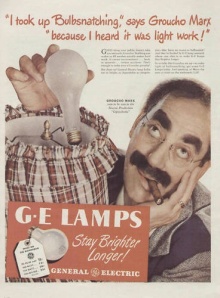
If I had had one brain synapse firing, I could have just flipped a switch and known if my bulbs were gone.
But I would have had to wait those accursed 10 to 15 seconds!
Filed under: It Made Me Laugh
Blog: The Children's Book Review (Login to Add to MyJacketFlap)
JacketFlap tags: Giveaways, Book Giveaway, Bedtime, Sleep, Andrew McLeish, Add a tag
Enter to win an autographed copy of The Sandman, by Andrew McLeish. Giveaway begins June 10, 2014, at 12:01 A.M. PST and ends July 12, 2014, at 11:59 P.M. PST.
Add a CommentBlog: The Children's Book Review (Login to Add to MyJacketFlap)
JacketFlap tags: Adventure, Siblings, Bedtime, Sleep, Author Showcase, Fears, The Sandman, Andrew McLeish, Add a tag
This charming story is perfectly suited for reading at bedtime—and best geared to readers aged 7 and older. Young readers will enjoy reading the story on their own but its comedic styling also makes it fun to read aloud. It is a dangerously exciting story but has a soothing end. The rhythm of the words and the playful tone of the story help to put bedtime fears to rest.
Add a CommentBlog: the enchanted easel (Login to Add to MyJacketFlap)
JacketFlap tags: nursery art, the enchanted easel, slumber, cute, clouds, painting, sketch, children's art, elephant, baby, sleep, moon, stars, pastels, whimsical, celestial, Add a tag
 |
| eli in slumberland ©the enchanted easel 2013 |
 |
| ©the enchanted easel 2013 |
 |
| ©the enchanted easel 2013 |
Blog: Whateverings (Login to Add to MyJacketFlap)
JacketFlap tags: Links, Christmas, Illustration Friday, humor, cartoon, comic, General Illustration, sleep, nose, joke, sleeping, reindeer, Rudolph, glow, santa's reindeer, Cartoons & Comics, Add a tag
My contribution to this week’s Illustration Friday prompt, “Glow”. The coloring is messy and ugly, but the idea was fun to try and pull off quickly.
Blog: E is for Erik (Login to Add to MyJacketFlap)
JacketFlap tags: acrylic, sleep, Add a tag
Blog: Library Goddesses Picture Books (Login to Add to MyJacketFlap)
JacketFlap tags: bedtime, sleep, toddlers, Add a tag
Goodnight Goodnight Sleepyhead is a very sweet book that is perfect for a bedtime read. Younger Toddlers will love the repetition of phrases as well as the fun of saying goodnight to body parts and parts of their room. The illustrations are adorable and soothing. Also Try: Goodnight Moon by Margaret Wise Brown The Going-To-Bed Book by Sandra Boynton On The Night You Were Born by Nancy Tillman
View Next 25 Posts




















Aardvarks, now lemurs. Does it get any better than this? The eactivity with the girls is looks very engaging, thanks, Zoe.
A fun post.
Thanks Simone, the girls certainly enjoyed doing the collage-y art, and lemurs are sooooo cute
Well we had Sloths in our Pojo Saves the Rainforest book last year perhaps we will have to write one with Lemurs this year. Not on the horizon at the moment as we are writing about the Romans and the Vikings – but you never know in this strange land of children’s fiction.